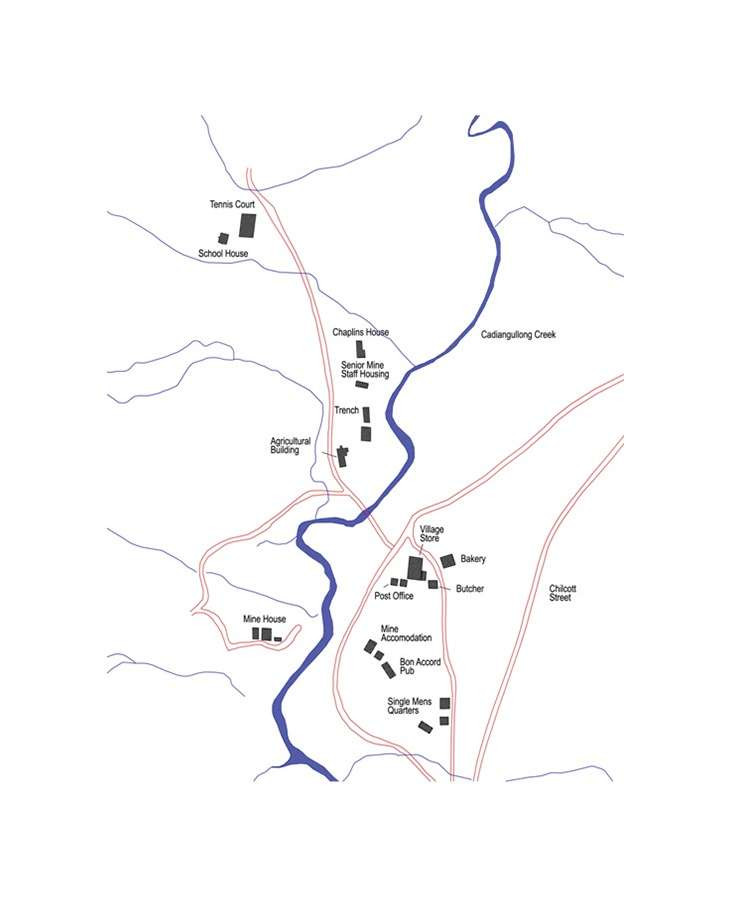Cadia Village & Hinterland
Cadia Village, a brief description
1861 - 1868
The founding members of the Cadia Mining Community
1861 - 1867
"The miners have all left the place"
1867 - 1869
Stores, shops and hotels
1861 - 1868
Cadia Post Office
1864 - 1920's
Cadia Public School
1865 - 1945
A matter of Faith - the role of the Church of Cadia
The Case of Benjamin Derrett, storekeeper
Closer settlement of the landscape
1860's onwards
Cadia Village
1870's - 1940's
The Post Office sketch map of Cadia
1914
Cadia Village, a brief description, 1861-1868
One of the earliest descriptions of a settlement at Cadia is provided by the 1861 Inventory. It mentions houses for the Refiner, Captain, Carpenter, Engineer and Manager, as well as one double house and three single houses, with dimensions and valuations for most of them.
With the development of the mine, this small settlement soon grew into a sizeable village, as described by the Wandering Reporter in the Sydney Mail of 16 September 1865:
In the following year, Bailliere’s New South Wales Gazetteer of 1866 provided some additional details of the services provided by the Village:
With the closure of the mine, the sale notice, appearing in the Sydney Morning Herald of 16 May 1868, was terse in its description of housing and other facilities:
“1 Manager’s house, and a large number of miners’ houses… Besides which there are TWO HOTELS, sundry store-keepers’ houses, shops, and post-office on the property, and belonging to the proprietors.”
Yet Josiah Holman’s report of 1868 was a little more informative and the first to describe the public school:
“BUILDINGS. – These comprise a manager’s house 30 by 60 feet, upwards of 60 huts suitable for officers and workpeople’s residences, a few of the latter built of slabs with shingled roofs, the remainder of slabs and bark roofs, two hotels and three stores, chiefly the property of the company; also a public school standing on an acre of land belonging to the Government, and a chapel; the foregoing forming the building of an irregular township.”
Although the mine had closed, the Village lived on until the 1940s, serving the mining community through its ups and downs, as well as the surrounding agricultural and mining district.
These brief historical reports, mostly derived from newspapers and directories, reveal little about the Cadia community and who lived and worked at the mine. To fill out the human story we need to explore in more detail the historical and archaeological evidence.

